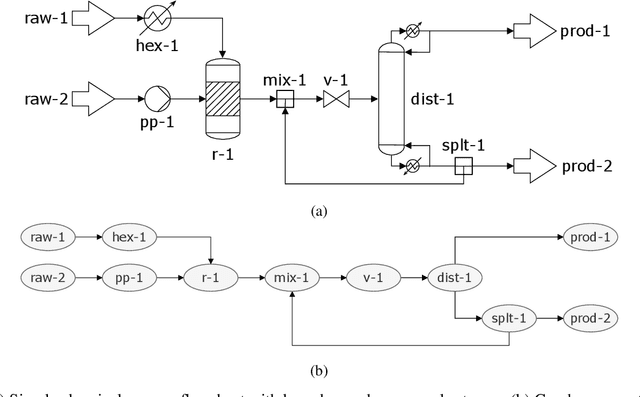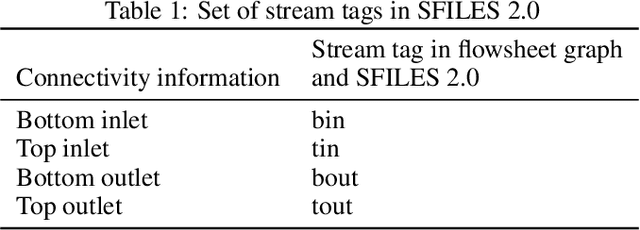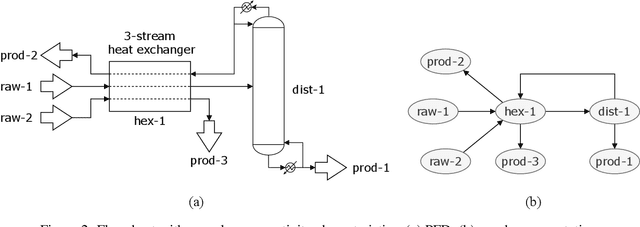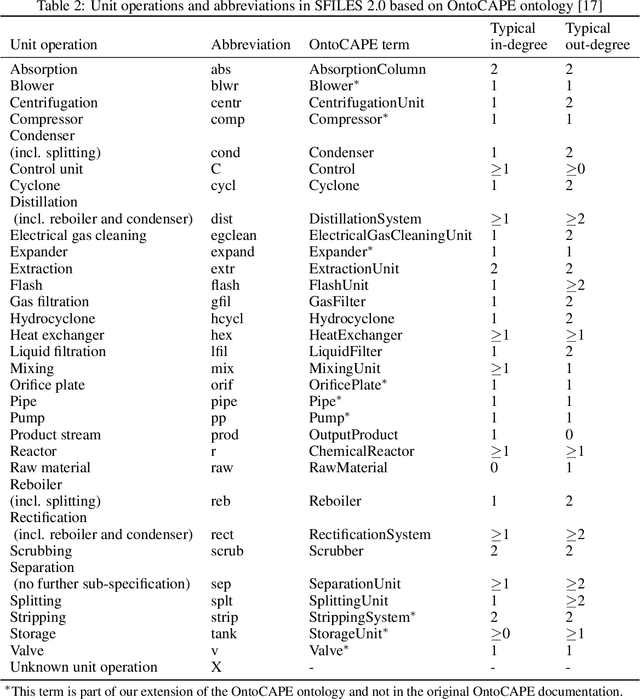Edwin Hirtreiter
Data augmentation for machine learning of chemical process flowsheets
Feb 07, 2023Abstract:Artificial intelligence has great potential for accelerating the design and engineering of chemical processes. Recently, we have shown that transformer-based language models can learn to auto-complete chemical process flowsheets using the SFILES 2.0 string notation. Also, we showed that language translation models can be used to translate Process Flow Diagrams (PFDs) into Process and Instrumentation Diagrams (P&IDs). However, artificial intelligence methods require big data and flowsheet data is currently limited. To mitigate this challenge of limited data, we propose a new data augmentation methodology for flowsheet data that is represented in the SFILES 2.0 notation. We show that the proposed data augmentation improves the performance of artificial intelligence-based process design models. In our case study flowsheet data augmentation improved the prediction uncertainty of the flowsheet autocompletion model by 14.7%. In the future, our flowsheet data augmentation can be used for other machine learning algorithms on chemical process flowsheets that are based on SFILES notation.
SFILES 2.0: An extended text-based flowsheet representation
Jul 25, 2022



Abstract:SFILES is a text-based notation for chemical process flowsheets. It was originally proposed by d'Anterroches (2006) who was inspired by the text-based SMILES notation for molecules. The text-based format has several advantages compared to flowsheet images regarding the storage format, computational accessibility, and eventually for data analysis and processing. However, the original SFILES version cannot describe essential flowsheet configurations unambiguously, such as the distinction between top and bottom products. Neither is it capable of describing the control structure required for the safe and reliable operation of chemical processes. Also, there is no publicly available software for decoding or encoding chemical process topologies to SFILES. We propose the SFILES 2.0 with a complete description of the extended notation and naming conventions. Additionally, we provide open-source software for the automated conversion between flowsheet graphs and SFILES 2.0 strings. This way, we hope to encourage researchers and engineers to publish their flowsheet topologies as SFILES 2.0 strings. The ultimate goal is to set the standards for creating a FAIR database of chemical process flowsheets, which would be of great value for future data analysis and processing.
 Add to Chrome
Add to Chrome Add to Firefox
Add to Firefox Add to Edge
Add to Edge